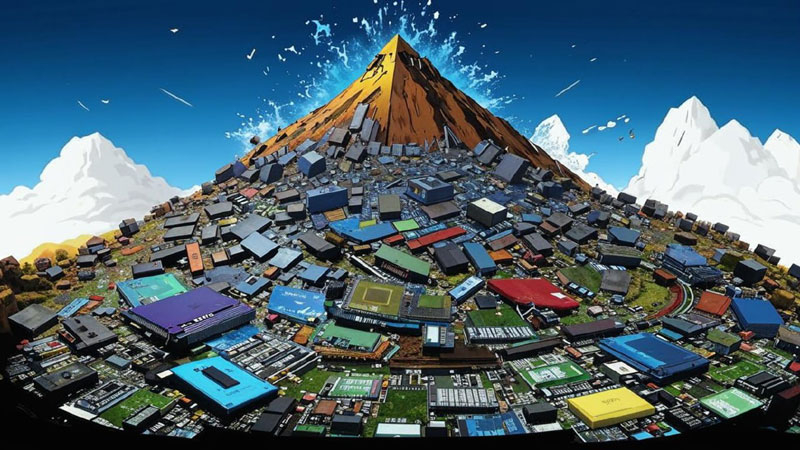The widespread interest in generative artificial intelligence will have tangible negative consequences, warn researchers from Israel’s Reichman University. For the first time, scientists have assessed the impact of the AI craze on the amount of e-waste it creates at the end of its life. By the end of the decade, AI will leave behind up to 5 million tons of waste annually, mostly with no hope of recycling.

Image source: AI generation Kandinsky 3.1/3DNews
According to various estimates, at least 60 million tons of electronic waste are generated on the planet every year – from washing machines and air conditioners to computers and phones. By the end of the decade, AI fashion will add to this volume annually from 1.2 to 5 million tons of waste. Since the problem of safe disposal and recycling of waste has not yet been resolved, adding new volumes will only worsen the situation. Fortunately, there are strategies that can mitigate the problem, although implementing them will require the will of the authorities and the willingness of manufacturers and developers.
First of all, everyone needs to realize that you have to pay for recycling. Electronic waste contains substances hazardous to health and nature, such as mercury, cadmium and lead. For the safe disposal of such materials or waste components containing them, special conditions and protection of people involved in recycling are required. Today, electronic waste recycling is mainly carried out in poor countries, where no one is concerned about safety and protection from harmful substances. Gold, silver, copper and other valuable metals are confiscated, and harmful substances with the remains of garbage are simply thrown away wherever necessary, and often this turns out to be the ocean or rivers in the countries of Southeast Asia and Africa.
In the case of platforms for artificial intelligence, the main volume of electronic waste will be represented by video cards, processors, boards, memory and storage devices. The productive life of this equipment is usually two years. Component and platform designers can create upgradeable solutions that can extend component life by up to five years, as well as design solutions that make it easier to recycle components at the end of their service life. With the right strategy, it will be possible to recycle up to 86% of the e-waste generated by AI, while today no more than 22% of waste is recycled.
«It is critical for companies and manufacturers to take responsibility for the environmental and social impacts of their products, say the study authors. “This way we can be sure that the technology we rely on does not harm the health of people and the planet.”